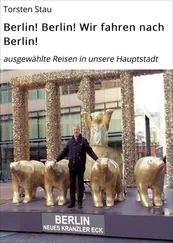At 05.00hrs a concentrated artillery-mortar fire was opened up on the Kroll Opera House and the Reichstag from the northern bank of the Spree River, and direct fire from ‘Himmler’s House’ and the corner building on the Al Moabit Strasse and the Kronprinzenufer… The 207 thRifle Division’s 598 thand 597 thRifle Regiments, which had crossed to the southern bank of the Spree River, by 09:00hrs had occupied positions west of ‘Himmler’s House’, but could not advance further because of the powerful fire which the Germans, holed up in the Kroll Opera House, were pouring on them. However, the 207 thRifle Division’s offensive actions drew the fire of the Kroll Opera House’s garrison on to itself. Thus the Germans could not wage intensive fire on our units storming the Reichstag.
By 12.00hrs elements of the 150 thand 171 stRifle Divisions had occupied their jumping off positions for storming the Reichstag in a German trench having high embankment sides and breastworks. At 12.00hrs more than a company of enemy infantry, supported by machine gun fire and fire from anti-aircraft artillery mounted on the Reichstag, counter-attacked elements of the 525 thRifle Regiment, which had consolidated in the block between the Kronprinzenufer and the Alsenstrasse. This enemy counter-attack was successfully repulsed by the timely opening of our artillery’s fire. Then the Germans changed the direction of their counter-attack. Up to a company of infantry, along with two tanks, began to attack the flank of the 380 thRifle Regiment’s second battalion, which had occupied its jumping-off position for storming the Reichstag east of ‘Himmler’s House’… The 380 thRifle Regiment’s second battalion repulsed the German counter-attack in savage hand to hand fighting.
At 13.30hrs the artillery preparation for the storming of the Reichstag started. All the guns, which had been crossed over to the southern bank of the Spree River, as well as tanks, self-propelled guns and guards mortars, opened direct fire on the Reichstag… The artillery left behind on the northern bank also concentrated its fire on the Reichstag… A solid cloud of dust and smoke stood over and about the building…
The artillery barrage lasted for twenty minutes. At 13.50hrs, Captain Neustroev’s 1 stBattalion of the 756 thRifle Regiment of the 150 thRifle Division broke into the Reichstag, carrying with them Banner No 5.
Fighting alongside Neustroev’s battalion were the seasoned troops of Senior Lieutenant Samsonov’s 1 stBattalion of the 380 thRifle Regiment and Captain Davydov’s 1 stBattalion of the 674 thRifle Regiment, each carrying their own banners. The assaulting troops entered the circular vestibule through breaches in the walls. They were immediately met with intense small arms fire. Return fire from automatic weapons and grenades suppressed the defenders, enabling the attacking troops to rush the main staircase. The first floor was then cleared of defenders, room by room. Meanwhile, the 2 ndBattalion of the 380 thRifle Regiment, which had seized the half-smashed concrete structures to the to the north-west corner of the building, were subjected to a company-strength counter-attack backed up by four tanks. The counter-attack was repulsed by the 171 stRifle Division’s 185 thIndependent Anti-Tank Battalion which put the German tanks out of action.
Meanwhile, the fighting inside the Reichstag intensified as Neustroev’s troops fought for control of the second floor. Sergeants Yegorov and Kantariya of the reconnaissance troop blasted their way to the half ruined staircase leading to the third floor, but were halted in their tracks by German machine gun fire. The Red Banner was waved from a second story window at 14.25hrs. Colonel Zinchenko, commanding 756 thRifle Regiment was not satisfied, demanding to know, ‘Where is the banner?’. The attempt to secure the whole building had failed at the first attempt. German troops still controlled the basement and parts of the upper floors. A second assault would be needed. All knew that the clock was ticking as Stalin wanted the Red Banner flying over the Reichstag in time for the important May Day holiday and parade.
Whilst the first attempt to storm the Reichstag was taking place, Hitler sat down to lunch with his remaining secretaries Gerda Christian and Traudl Junge, also present was his cook Constanze Manziarly. Eva Braun did not attend, as presumably she had no appetite. Hitler’s last meal of spaghetti in a light sauce was taken in near silence. Then after finishing this last meal he thanked his cook, after which he stood from the table and in a barely audible voice said, ‘The time has come; it’s all over’. His decision to commit suicide on this day came following his conversation with Mohnke earlier in the morning. Mohnke confirmed that the end was approaching as his troops could only hold on for a few hours more. To this end, Hitler instructed his adjutant Otto Gunsche to take steps in order to ensure that his remains were ‘forever undiscovered’.
Now it was time for the final farewells. On his way to the conference room, Hitler was stopped by his faithful valet Heinz Linge who wanted to say goodbye. Hitler told him that he should attempt to break out of the Soviet encirclement. Linge asked for whom should he make such an effort? Hitler replied, ‘For the coming man’. He then bade a formal farewell of sorts to Goebbels, his wife Magda, Bormann, Generals Krebs and Burgdorf, diplomat Walther Hewel, Vice-Admiral Hans-Erich Voss, the head of the Reich Security Service bodyguard Brigadier-General Johann Rattenhuber, Gunsche, Linge, head of Department 1 and criminal director of the Reich Security Service Lieutenant-Colonel Peter Hogl and the remaining secretaries Christian and Junge. After a few words in response to those making up the mournful gathering , Hitler returned to his private rooms with his wife.
His last moments of reflection (no doubt concerning those he believed had betrayed him) were interrupted by an almost hysterical Magda Goebbels who insisted on speaking to her beloved leader. Gunsche later recalled the scene:
The Fuhrer was standing in his study. Eva was not in the room, but there was a tap running in the bathroom so I assume she was there. He was very annoyed at me for interrupting. I asked him if he wanted to see Frau Goebbels. ‘I don’t want to speak to her any more’, he said.
The excellent film Downfall which showed Hitler speaking briefly with Magda. However, the reality was that he had heard enough and wanted to be left alone. She returned to her room sobbing. The lower bunker area was cleared in an attempt to provide a semblance of dignity for the final act. Seeking a release from the unbearable tension, many went to the canteen where a macabre imitation of a party was taking place. The noise penetrated to the lower depths but attempts to stop the carousing of those involved met with little response.
Unable to stand the tension, Hitler’s youngest secretary ran upstairs where she bumped into the Goebbels’ children. It transpired that none had eaten since breakfast, so she went to fetch them something to eat. On her return, she prepared the food and attempted to distract the children. Then, at some time between 15.15hrs and 15.30hrs Hitler and his wife committed suicide. There is some dispute as to whether the actual shot from Hitler’s pistol was heard (the constant noise from the generators and ventilation system would have made distinguishing individual sounds difficult). The tension was finally broken by Linge who entered Hitler’s room. On surveying the scene he reported to Bormann very matter-of-factly, stating ‘It’s done’. Gunsche then went into the room to see for himself before confirming to those waiting in the conference room that Hitler was dead.
Time was running out fast, therefore the removal of the bodies to their cremation site above ground took place very quickly. Hitler and his wife’s lifeless forms were wrapped in blankets and carried to a small trench close to the bunker exit. The bodies were doused in petrol provided by Kempka and set alight. The heavy shellfire meant that there was little opportunity for those present to stage a Wagnerian funeral, instead the disposal of the bodies was hurried and somewhat undignified. At approximately 23.00hrs, the charred (and much reduced) remains of Hitler and his wife were gathered up, and as Gunsche later recalled, ‘were let down into a shell hole outside the exit from the bunker, covered with earth, and the earth pounded firm with a wooden rammer’. Nurse Flegel later recounted how by failing to answer her simple question of, ‘Is Hitler still alive’, Professor Hasse confirmed his death to her on the late afternoon of 30 April:
Читать дальше












